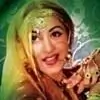
HISTORY AND ORIGIN OF DURGA PUJA
In the Hindu faith, Durga represents the Mother Goddess, the perfect blend of femininity and strength. Puja, in Hinduism means worship. Durga is presented as the Goddess with ten hands holding weapons endowed with special powers, riding a fierce lion. She is also depicted as assuming mudras or hand gestures, which have specific symbolic meanings. Durga Puja is celebrated widely by people of Indian origin and is most popular among the Bengali community in Kolkata.
The history and origin of Durga Puja dates back to Ramayana, the Hindu epic. While Rama along with his devoted wife, Sita and faithful brother, Lakshman were spending there exile in the forest, Ravana, the demon king abducted Sita and took her to his island kingdom of Lanka. To rescue Sita from the grasp of Ravana, Rama waged war against him. As Ravana, the demon king of Lanka was blessed by Brahma's boon. Rama was advised by Lord Brahma himself to persuade Shakti or the Energy in the form of Durga. Therefore, Rama invoked Maa Durga to seek religious blessings even when it was not the time meant to worship her. Hence, worshipping of Devi Durga in the month of autumn is called Akal Bodhan, or unseasonal invoking of the Goddess.
The origin of Devi Durga is mentioned in the Markandeya Purana, the primary religious text of the Hindu religion. According to the accounts from the Devi Mahatmyam, Durga was created as the Goddess adept in combat to bring the ruin of Buffalo demon Mahishasura. The blessings of Brahma endowed Mahishasura with the boon that he would not be defeated by any man or God; only a woman could kill him. This blessing made Mahishsura invincible and he started an orgy of violence on earth, heaven and the nether world.
Enraged by his terrorizing acts, the supreme trinity, Brahma, Vishnu and Shiva emitted surge of energy and luminance blazed ahead, pointing towards a singular spot which assumed the shape of a young woman, and Durga was born. Her amazing face was sculpted by the light of Shiva, her ten arms created by Vishnu and her legs were shaped by Brahma. She was stunningly beautiful, with the torso created by Indra, the king of Gods, breasts by moon God, Chandra, thighs and knees by wind God, Barun and her three eyes by none other than Agni, the fire-god.
The Gods enchanted by her graceful beauty and formidable energy, praised Durga and bestowed her with divine and magical weapons. Shiva gifted her trident with a spear head, Krishna gave her chakra, a rotating disc, Agni presented her a missile, the god of sea gave her a conch, and from the god of wind she got arrows. King of Gods, Indra gave her a thunderbolt and his famous white-elephant, Airavata and she received the lion to ride, from the God of mountains.
Now equipped with all these marvelous and powerful weaponry, Durga emerged in the battle ground to fight Mahishasura. The fierce demons though initially admired the ravishing splendor of their rival, but soon Mahishasura in the form of the buffalo demon charged ahead in fierce rage. After an intense battle, soon Durga beheaded the buffalo demon and from its torso, emerged Mahishasura in his real form. Finally on the tenth day of the waxing moon fortnight, with the divine trident given by Shiva, Durga pierced the chest of Mahishasura, bringing the end of the malevolent clout over the world.
Durga is not only the embodiment of strength but she is also an embodiment of kindness, tenderness, sensitivity. In other incarnations of Devi Durga, like Karunamayee, Annapurna or Parvati, she personifies the motherly feelings and is represented as a softer persona. Over the years the autumnal worship of Durga was adopted by the Hindus and it became their primary festival. This year Durga Puja is going to be celebrated from September 29 to October 2, 2006.




























